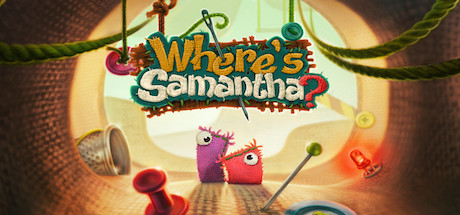If you like puzzle platformers, jump into the fabric universe of Where’s Samantha?, a seemingly well-stitched together, engaging yarn with puzzles containing many fun ways to dye.
Type: Single-player
Genre: Platformer
Developer: Respect Studios
Publisher: ROKiT Games Limited
Release date: 24 March, 2021


Intro
I confess the title initially caught my eye because it made me think of Olaf looking for Samantha in Frozen 2, even though it was obvious there was no connection from even a cursory glance at the title art and the game’s store page. That said, once I did look into the game, I thought it looked like a cute concept, and even though it’s different from what I usually like to play, I decided to give it a go.
Game Universe
The story starts as an insecure (and paranoid) fabric swatch named George sets out to try to find his missing love, the titular Samantha. Later, as the levels progress, the player also plays as Frank (a character twice as tall as George), clones of George and Frank, and even Samantha herself. Although the initial premise may seem like the standard damsel in distress trope, eventually Samantha takes an active role (and even role reversal by trying to rescue George as he is trying to rescue her).
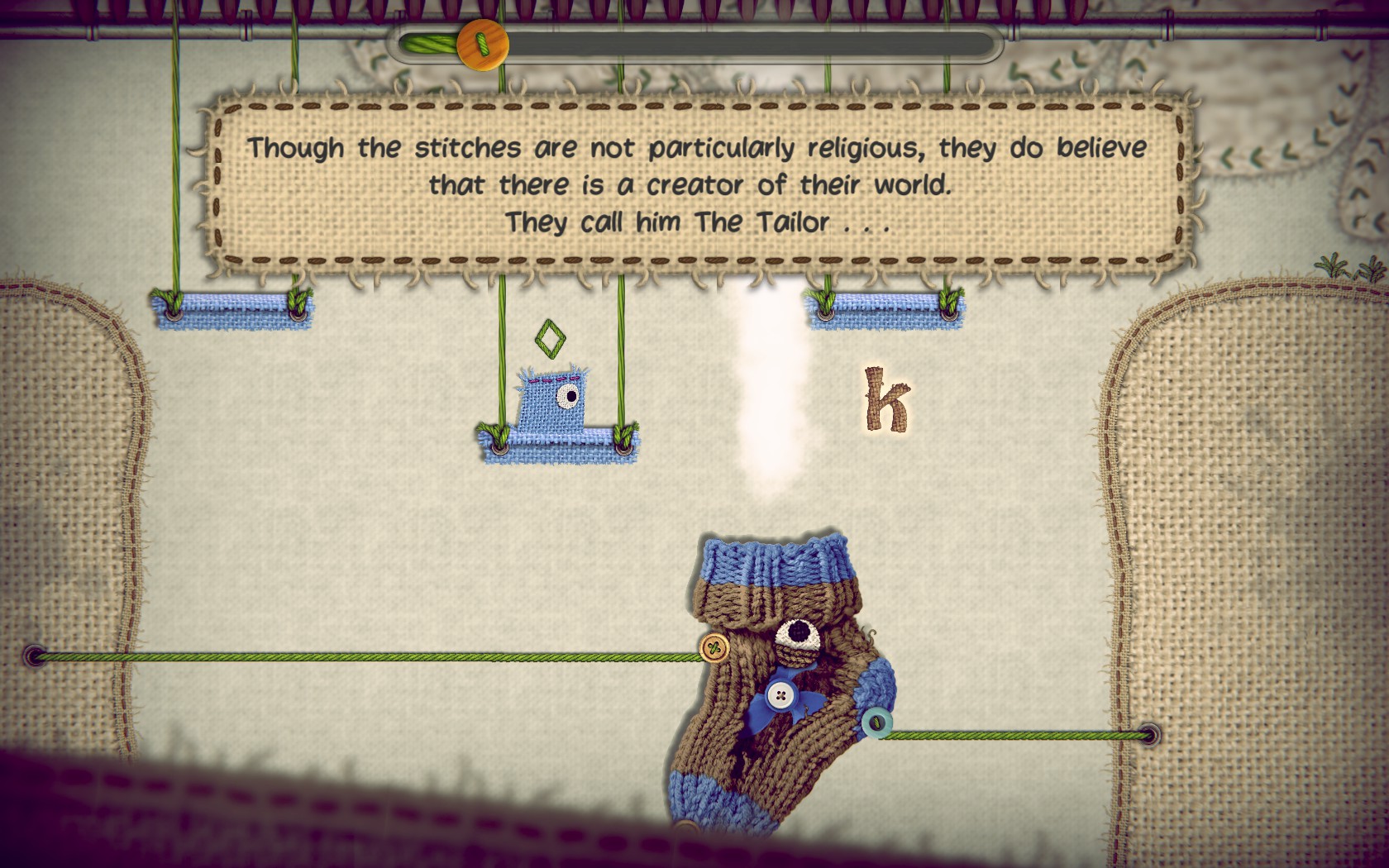
Gameplay and Mechanics
Much of the gameplay and mechanics is reminiscent of classic 2D platformers like Mario, but that doesn’t mean it’s entirely intuitive. The only tutorial information is provided pictorially using chalkboards within the levels, which is aesthetically adorable but can make interpretation challenging, and unfortunately there’s no list of keys to double-check as a refresher if needed. This sometimes means new mechanics must be figured out by trial and error. I played with mouse and keyboard, although the store page says the game has ‘Partial Controller Support’ (I’m not really sure what that means).
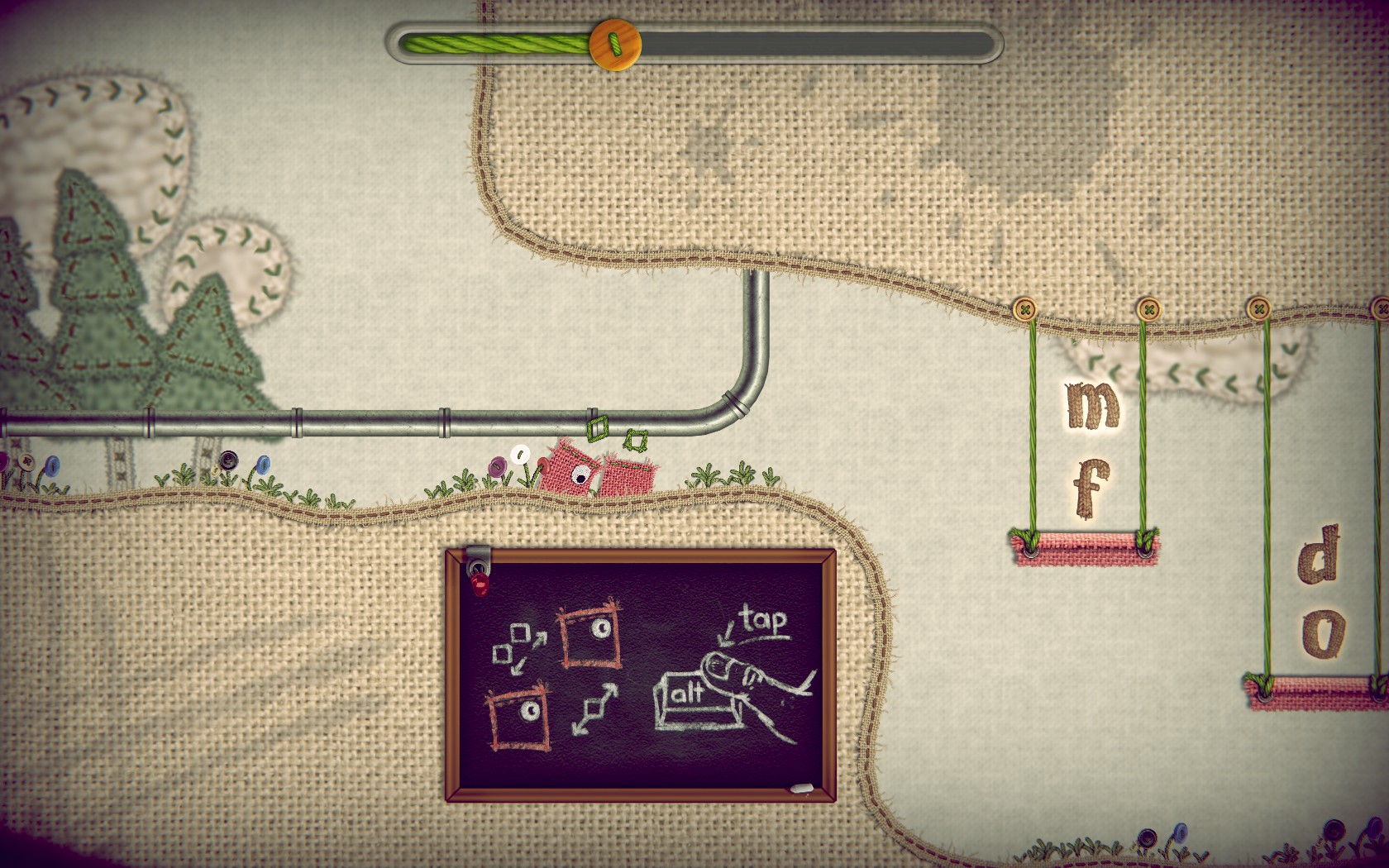
Fortunately the color coding helps with the paucity of explicit explanation. The color of shelves, buttons, socks, and other objects often indicates the color of the character whose weight is needed or can be handled. George (square), Frank (rectangle twice as tall as George), and their clones are red; Samantha (round) is orange. Two characters combine to form a blue character, and three characters combine to form a purple character. The blue character is a little taller than the red character and twice as heavy, while the purple character is of course the heaviest (being three red characters combined). Each of the characters (and their respective clones) also have different abilities that may come in handy during different puzzles. Samantha weighs less than George and Frank and is capable of jumping longer distances or gliding. Frank can double jump.
Weight plays a role in many of the puzzles, and sometimes the player will need to combine or split apart the characters to get a character to be a particular weight (or to not be a particular weight) to solve them. Some puzzles will need two or even three characters to solve, while in others the player will need to move each character through the same puzzle in succession.
There is no life limit, so players can respawn an unlimited number of times. Most respawning takes place at checkpoints, and most of the checkpoints are thoughtfully and generously placed, but there are still a few spots that can be very tricky in terms of timing and respawning placement. As the levels progress, new challenges are added (e.g., bubbles that cause the characters to split apart if they are combined, lasers, spinning blades). Unfortunately, I also ran into a couple of bugs and poorly designed puzzles that resulted in me having to restart levels. This doesn’t happen frequently, but it happened enough times that it is worth mentioning.
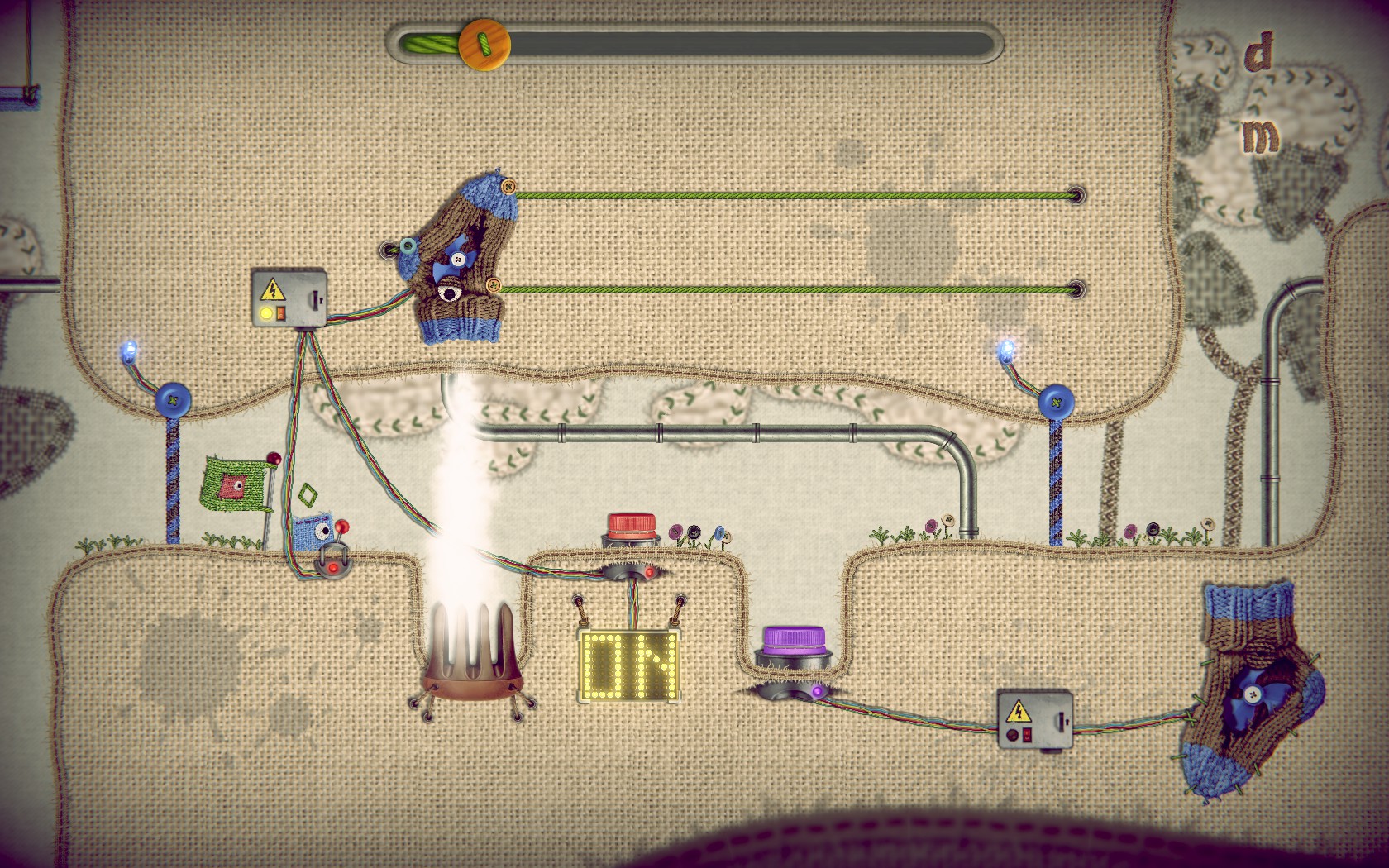
Art Style and Graphics
The art style and graphics are an area where the game really shines. The textures on the different fabrics, objects, and surfaces seem tangible, showing an incredible level of detail considering being hand drawn. The puzzles cleverly use everyday objects (e.g., socks, screws, pencils, bottle caps, buttons) scaled in a way that makes sense for characters that are fabric swatches.
Sound and Music
The story segments in between levels are voiced by a British narrator à la Shining Time Station and Thomas & Friends. The majority of sound effects dovetail perfectly with the action and scene, although there are a couple that are perplexing. For example, why does an eerie Halloween-esque sound effect play when close to a yarn ball? The background music blends in for the most part, but makes sense with the current tone of the story when noticed.
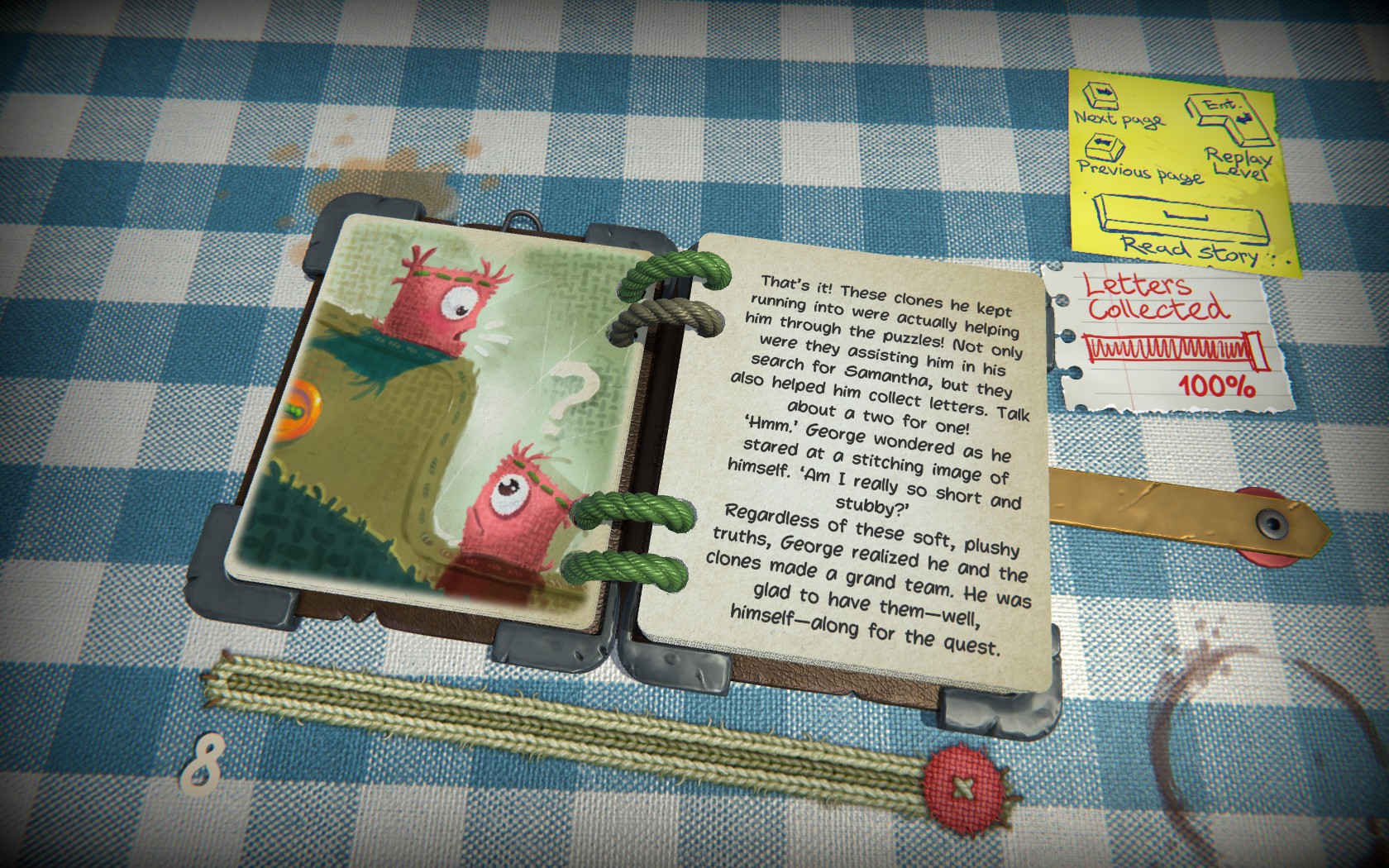
Achievements and Extras
Where’s Samantha? has no achievements, trading cards, or extras. Although the store description mentions collectibles, I think it may just be referring to the story segments that play between levels if all of the letters have been collected. However, I haven’t actually tested if the story segment doesn’t play if 100% of the letters aren’t collected; I’m basing this interpretation off of the following text from the store description, “while also collecting letters that will reveal more of the story as you progress”.
Verdict
At $12.99 at the time of review, if you like puzzle platformers, Where’s Samantha? has a cute art style and fun puzzles that make it well worth buying at full price. However, if puzzle platformers aren’t your jam, this game probably isn’t going to change your mind.

